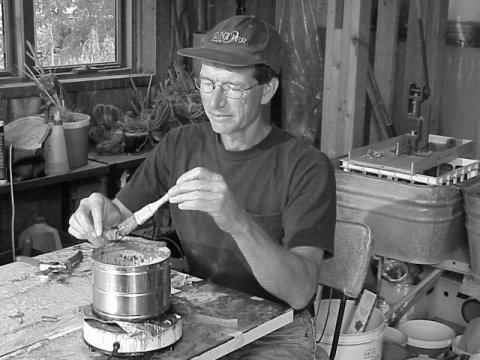While Ron has always had an interest in trees, his interest in agroforestry began in 1993 when he heard about it from the Nebraska Nut Growers. He saw alleycropping with black walnuts and pecans as a way to make more money in the future while allowing him to farm less land.
Ron began alley cropping in a 30-acre field in 1993 with one row of pecans, adding another in 1994. Three more rows were added in 1995, along with six rows of grafted black walnut. Finally in 1997, he completed his alley cropping with six more rows of grafted black walnut. Corn and soybeans are alternated yearly between the tree rows, providing an annual income until the trees start bearing heavily. The tree rows are spaced 60 feet apart and 30 feet between each tree within the row. Ron estimates that he has taken less than three acres out of production with the tree rows.
Some of his black walnut trees, at 4 and 5 years old, are already producing a lot of nuts. In fact, he has an Emma K cultivar that is producing so heavily that he has to harvest nuts off the terminal branch to prevent it from breaking.
Ron attributes his success to bench grafting. Not only does it allow him to grow trees that produce earlier, but it also leaves the graft below the soil line. This will eventually provide a high-quality saw log, bringing additional income to future generations of his family when nut production declines.
Ron bench grafts in April when he has free time, using new half-gallon milk containers with potting soil. A polyethylene bag is placed over each graft and removed as the graft begins leafing out. The black walnut seedling is moved to a nursery, and from the nursery it then goes to the field.
In addition to the more traditional alleycropping practice of nut trees and row crops, Ron has also established raspberries between rows of pecan trees for a you-pick operation. Browsing deer are a constant problem. Although different techniques have been tried to discourage the deer, including soap, one solution that worked well was to place four 3/8- inch re-bar poles vertically around his pecan trees. Except for one bent bar the day after Ron placed them, none of the others were disturbed and the trees were unharmed.



